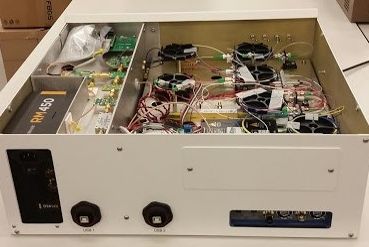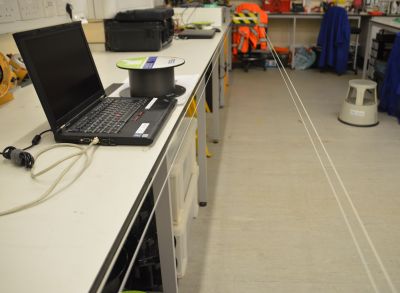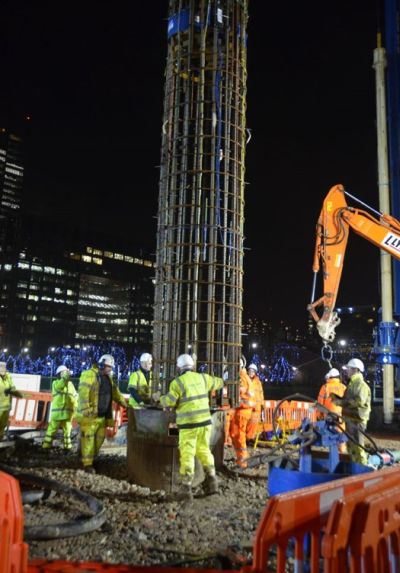Our infrastructure faces significant challenges. Infrastructure in urban areas is affected by the need to increase load and usage, and the demand can change every decade. And because current projections show we will face an increase in the number and severity of extreme weather events, our infrastructure needs to be more resilient.
“Many infrastructure systems are fixed in space and time over many years. They may have a design life of 50 to 100 years, and they may be used indefinitely if there is consistent demand,” says Kenichi Soga, CEE’s newest faculty member, who joined the CEE in January, 2016.
“The major challenge to future-proofing our infrastructure is that the timescales of infrastructure and buildings are long compared to those of typical sensor systems. This makes it difficult to achieve the concept of whole-life-cycle-based asset management. Our next generation of sensor systems needs to be either long-lived or adaptable for replacement,” says Soga.
Soga and his research team are developing sensor systems that can be used for long-term monitoring of infrastructure systems, over the full life-time of projects.

Prototype of high performance distributed fiber optic sensor system. |

Testing of distributed fiber optic sensor system in the lab. |
For example, by using an inert optical silica-based fiber cable as the sensor, Soga is developing a lowcost distributed fiber optic sensing system that assesses the condition of infrastructure and buildings by embedding fiber cables inside buildings. Soga’s system utilizes low cost digital electronics and advanced digital signal processing techniques.
“Our system can provide a spatially continuous strain and temperature profile along an optical fiber at high resolution, i.e., a data point every 20 mm over a span of several kilometers.”
The system is currently being tested to obtain the distributed strain profile of a structure under dynamic motions. Soga believes we need to build industry’s confidence by deploying new monitoring systems on live infrastructure projects and demonstrating capabilities. He spent over 10 years in the United Kingdom testing innovative systems of distributed fiber optic sensors, computer vision, and wireless sensor networks at actual construction sites.
His work led to the creation in 2011 of the Cambridge Centre for Smart Infrastructure and Construction, a leading-edge center that translates research into commercial applications in order to transform the future of infrastructure.
“Our main focus so far has been to understand structural performance during construction, and to foster design improvements. Our next step is to monitor the infrastructure over a very long time, both to assess its resiliency during and after an extreme event, and to pass on the data to the future generations who will be relying on it.”
Soga’s research team is also developing a low power wireless sensor system coupled with energy harvesting systems that collect ambient vibrational energy to power the sensor system.
“Battery technologies available today do not last long,” says Soga, ”but self-powered sensors with a robust energy harvesting system can be an option for lifetime monitoring.”
Along with his former colleagues at Cambridge University, Soga developed a vibrational energy harvesting system, which in turn led to a start-up company. Soga’s former students also created start-up companies, two based on wireless sensor networks and one on image-based monitoring. Providing services where sensor technology is tightly integrated with engineering analysis is an essential philosophy throughout.

Installation of distributed fiber optic sensors on large diameter piles |
Installation of distributed fiber optic sensors in tunnel |
“Sensor innovations must go hand in hand with engineering analysis tools to provide a new paradigm for engineers to evaluate the actual performance of structures under normal circumstances, and to assess their safety in extreme events,” says Soga.
“We need to move from supplying infrastructure to supplying a whole-life system,” says Soga, “This will create a demand for life-cycle monitoring and the associated smart technology.”
Long-term engineering performance data combined with engineering analysis promises to transform the industry to a whole-life approach that includes the design and commissioning, the construction process, exploitation and use, and the eventual de-commissioning.
Soga earned bachelor’s and master’s degrees in engineering at Kyoto University. He was awarded a PhD in CEE from UC Berkeley. He was a Professor of Civil Engineering at the University of Cambridge for 20 years, up until his recent return to the Berkeley campus.